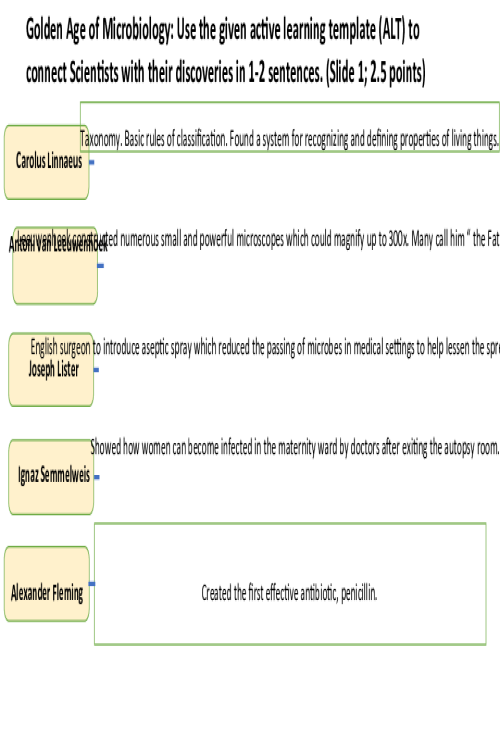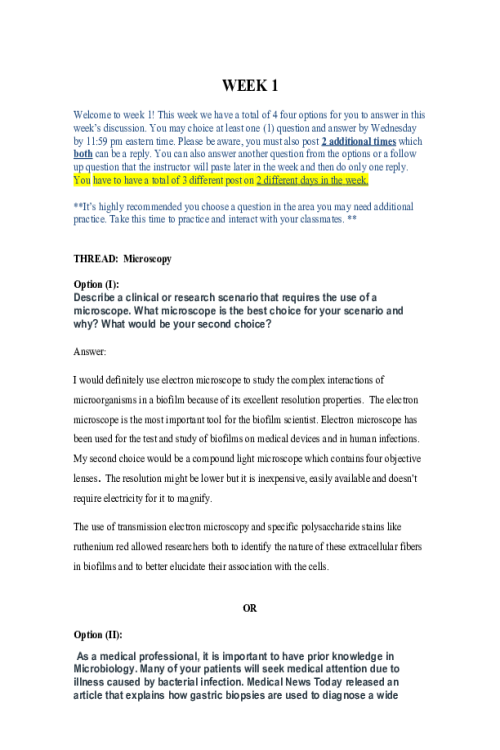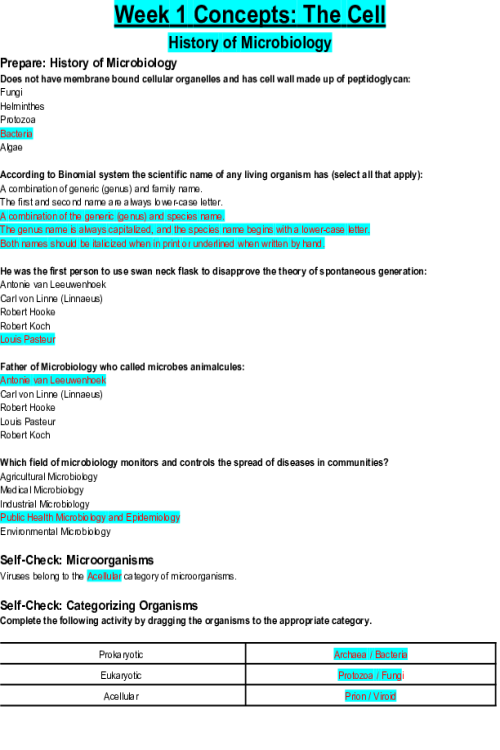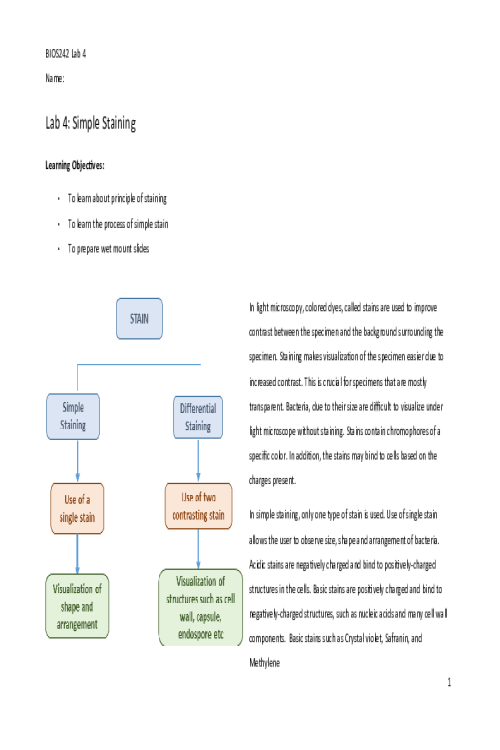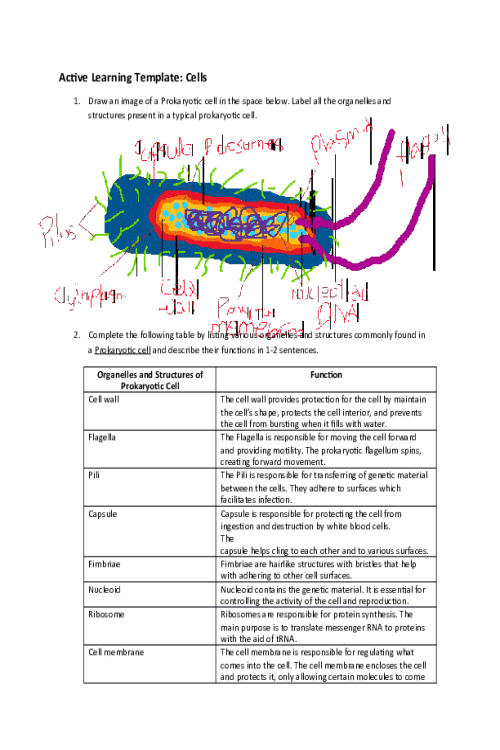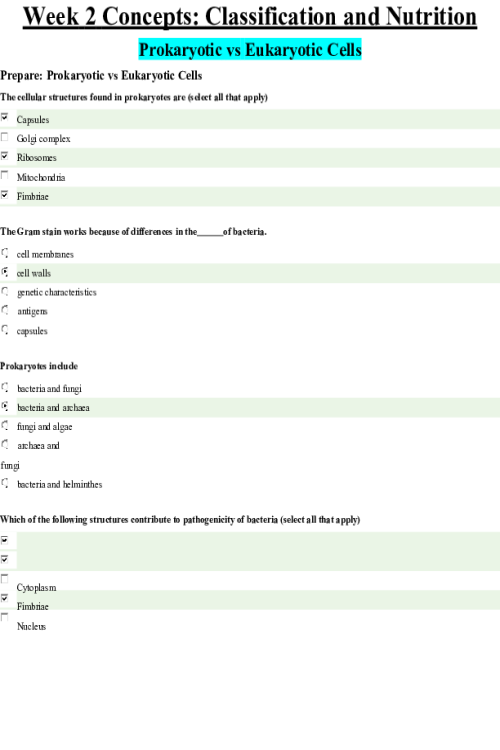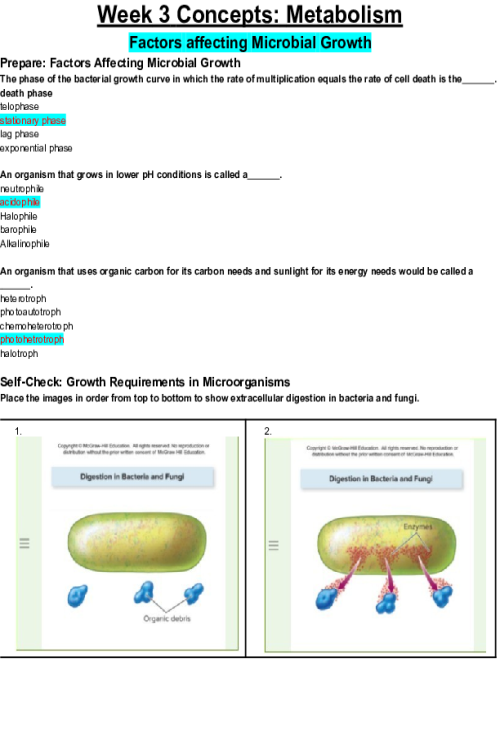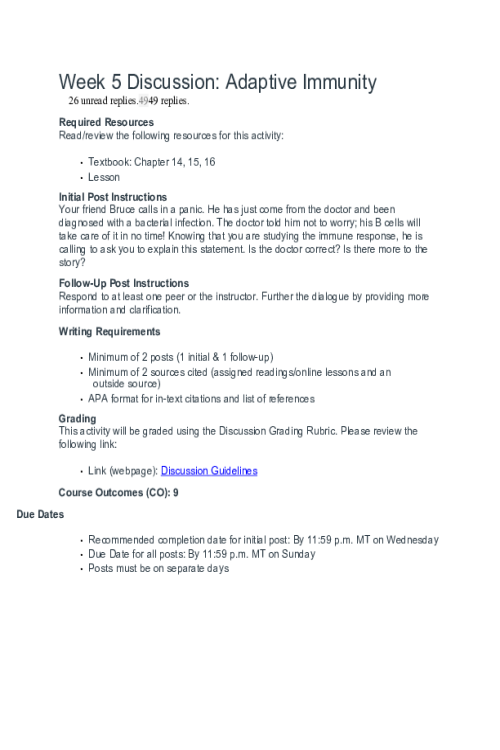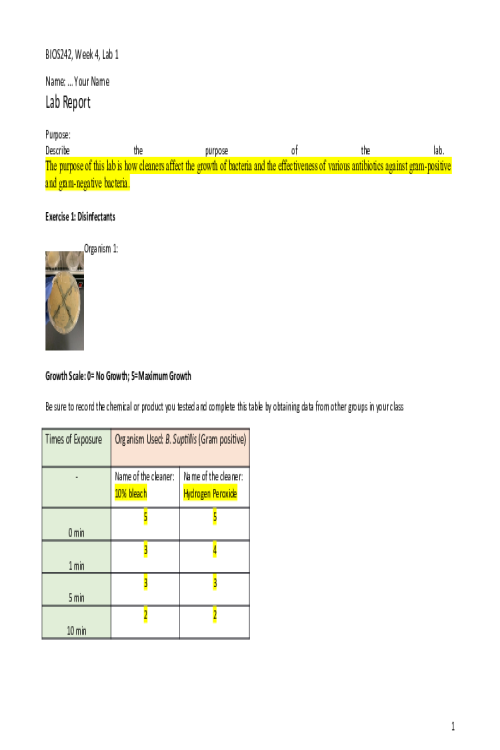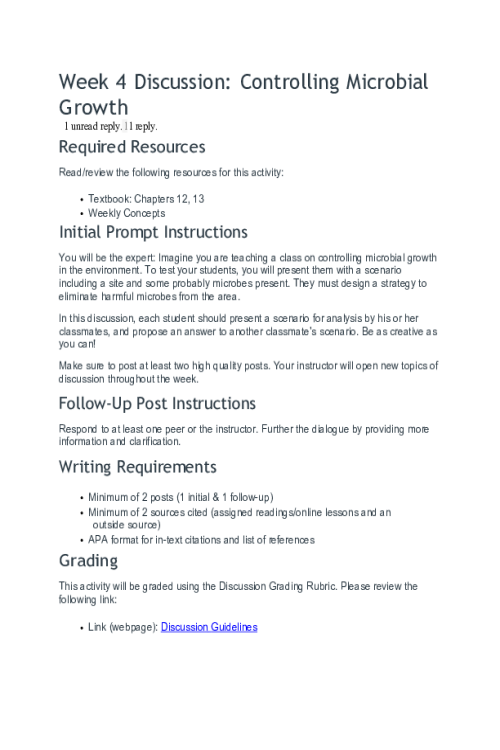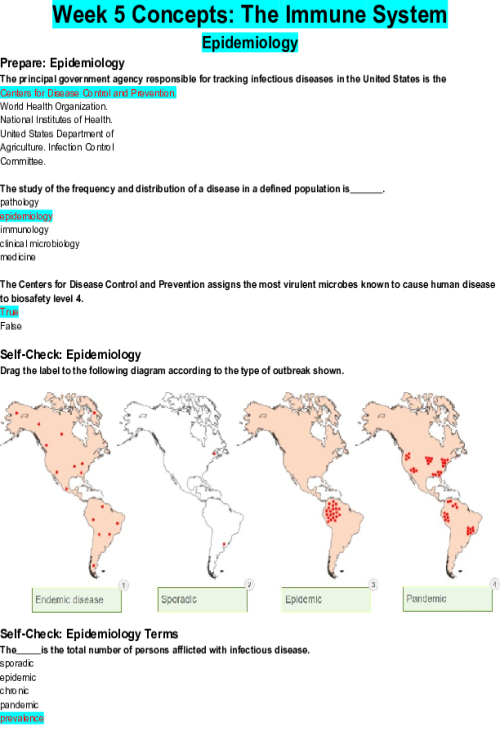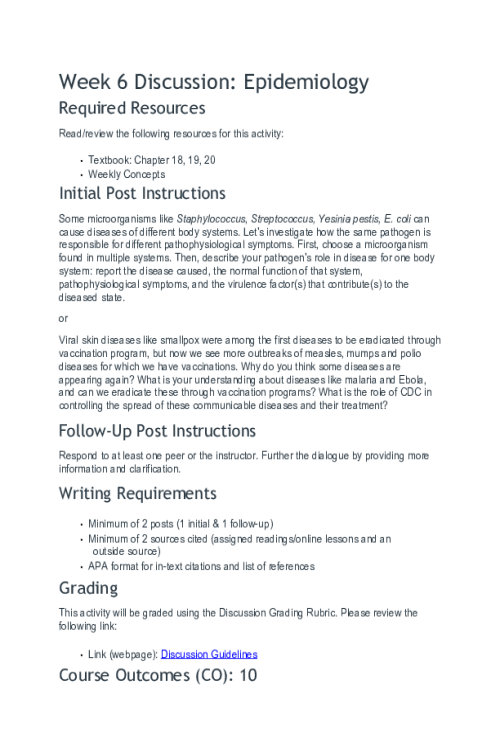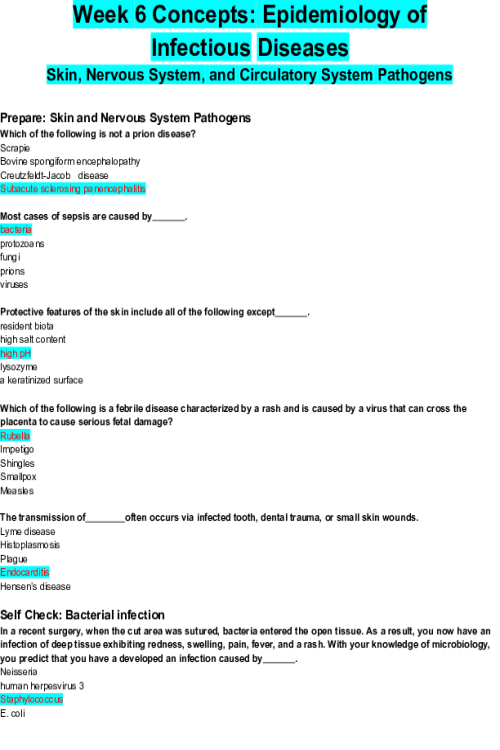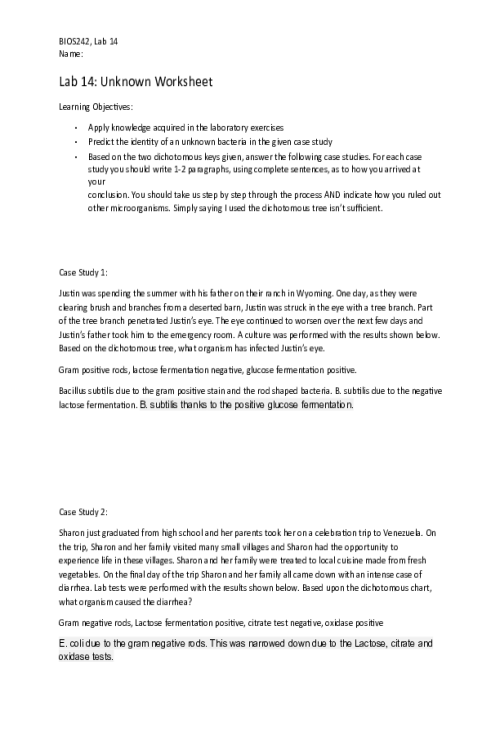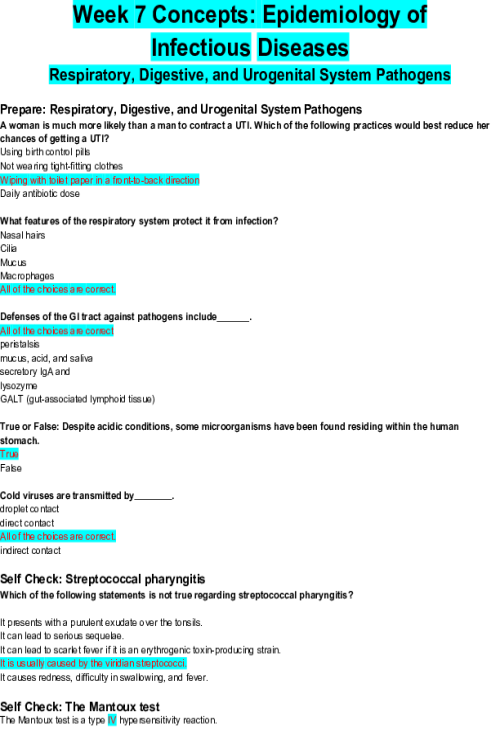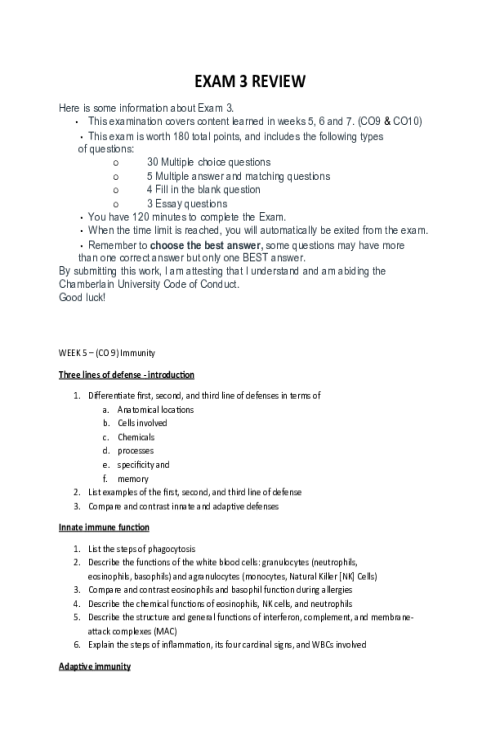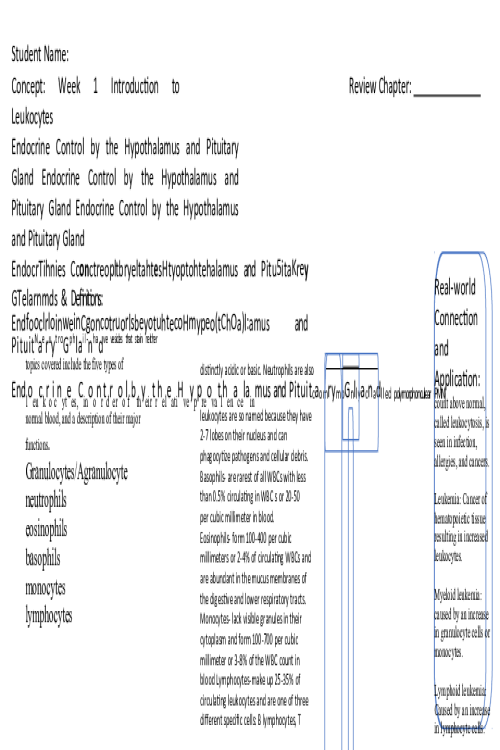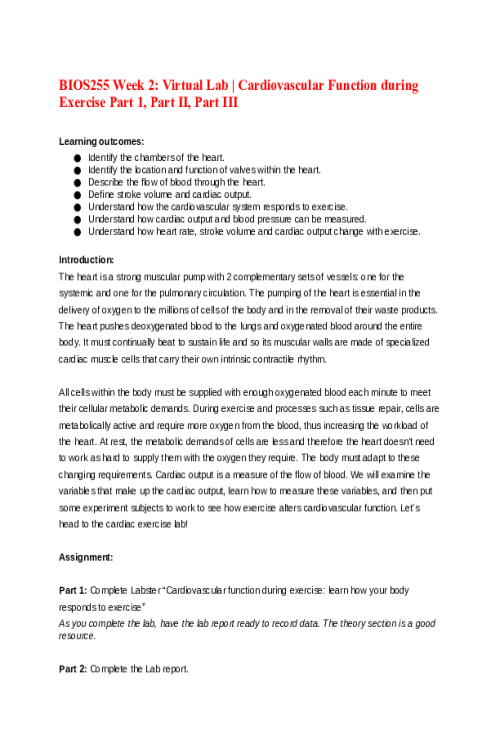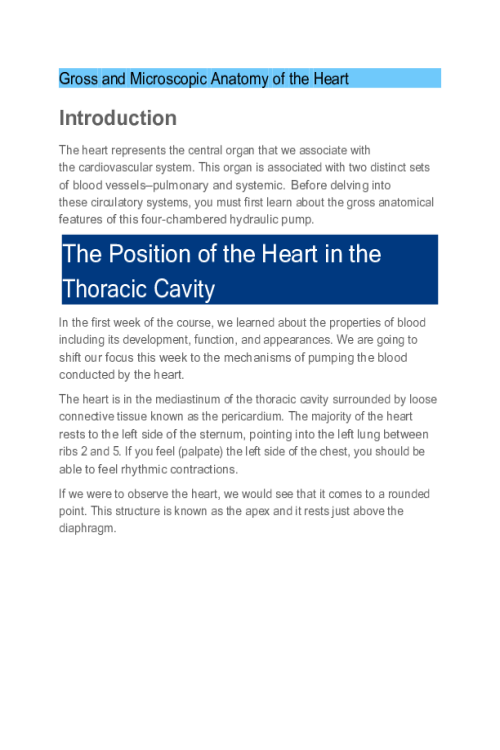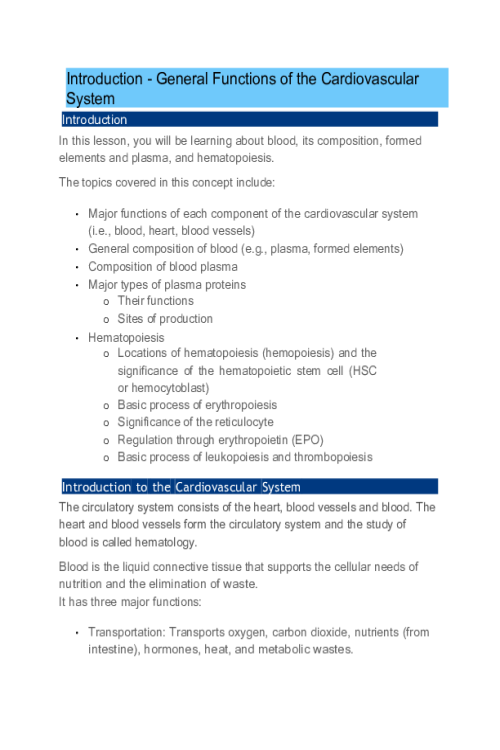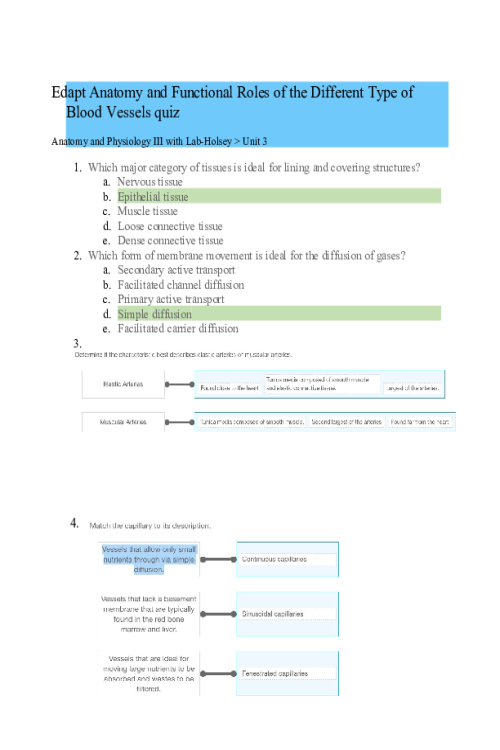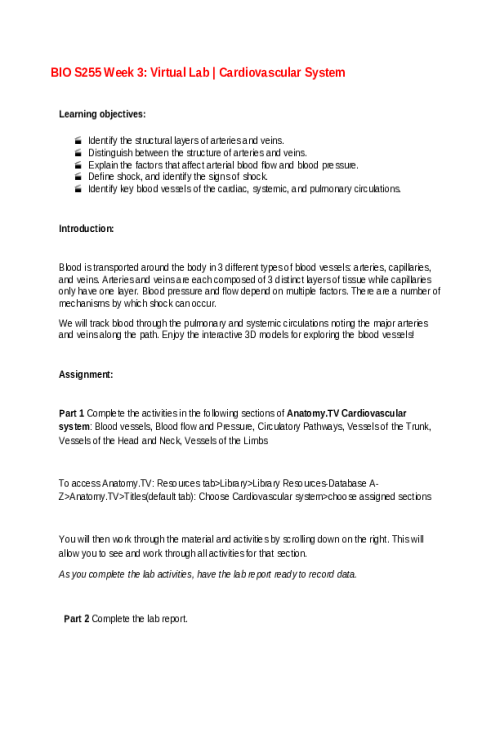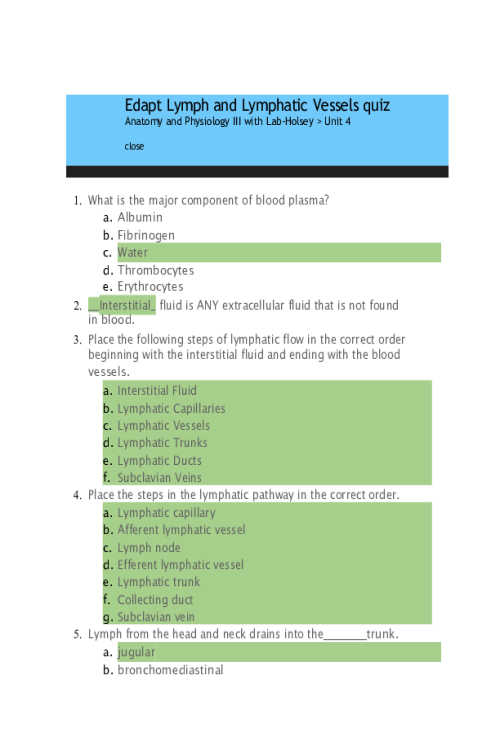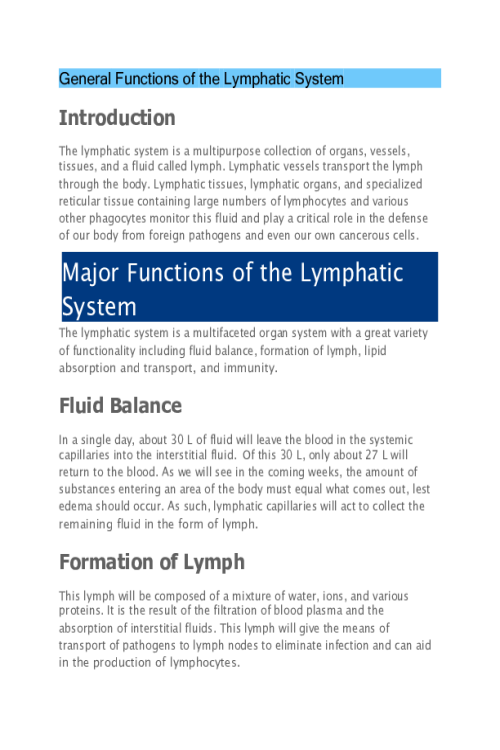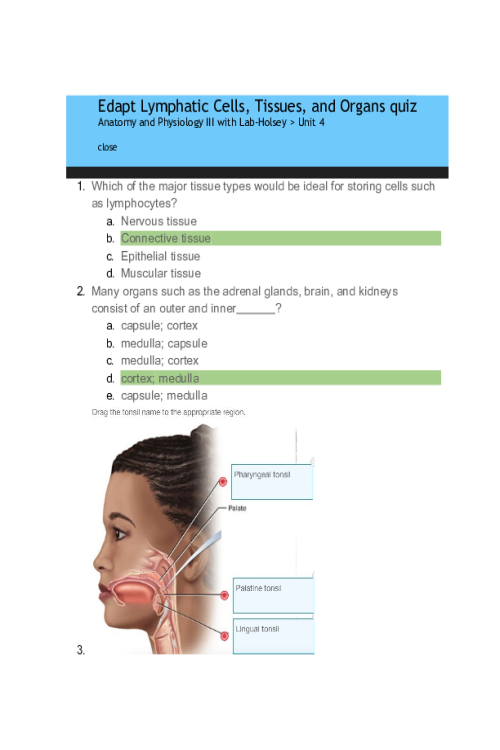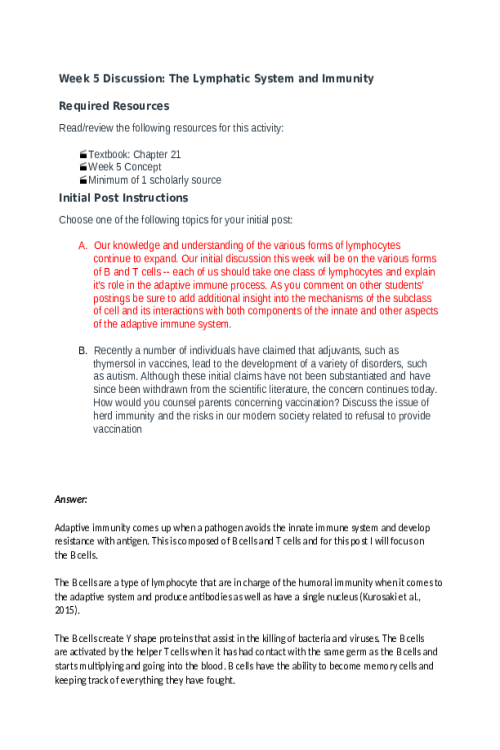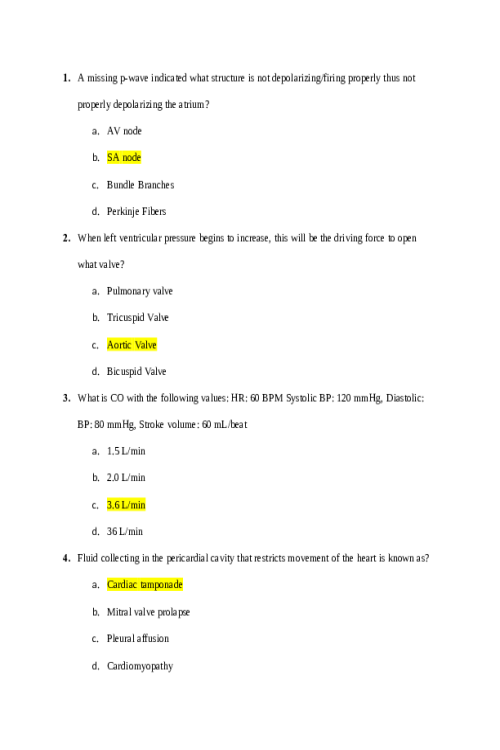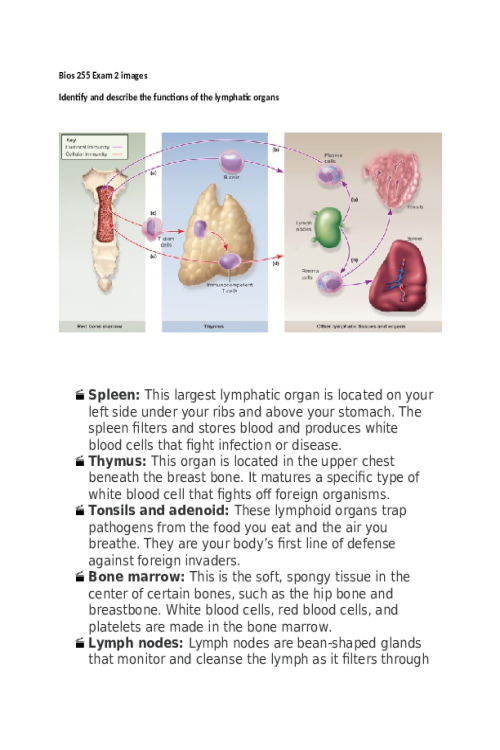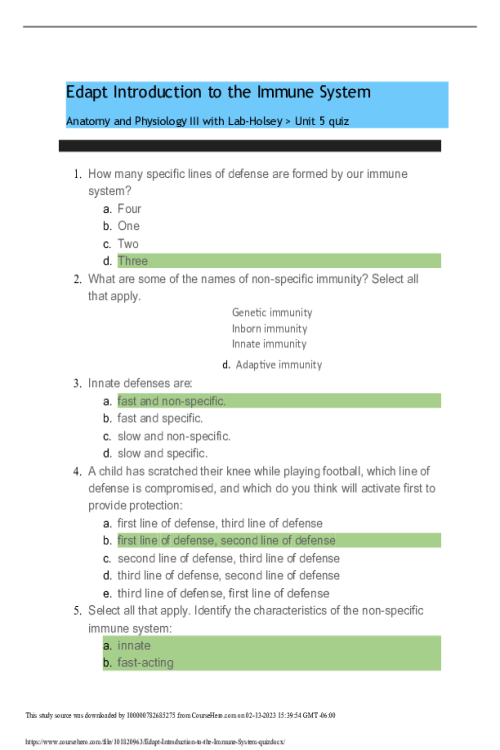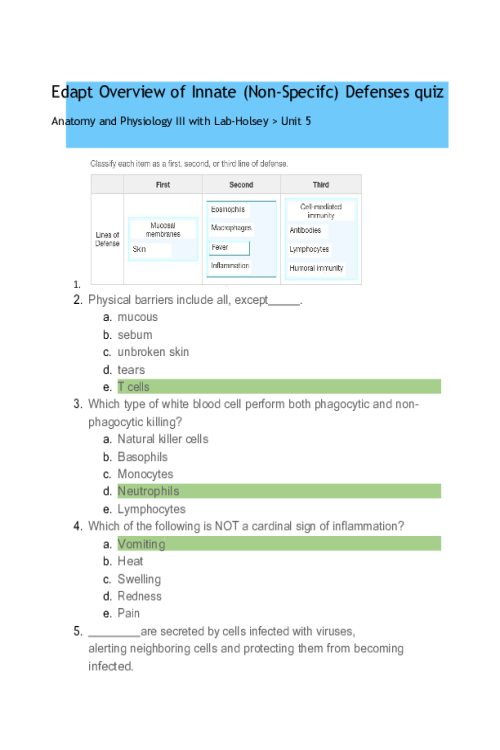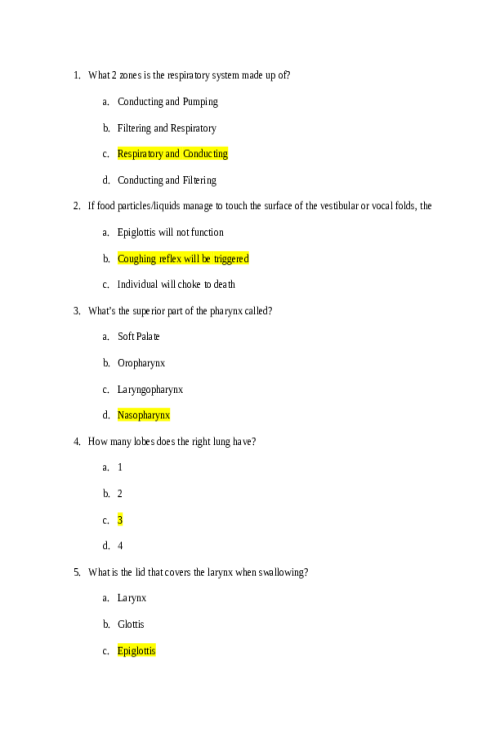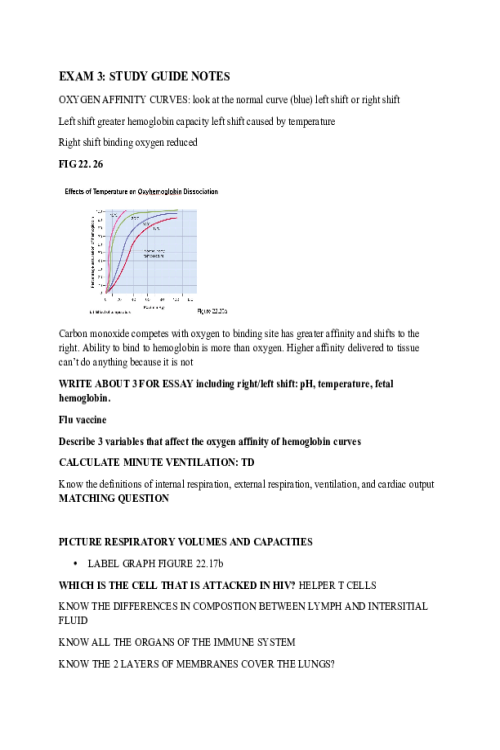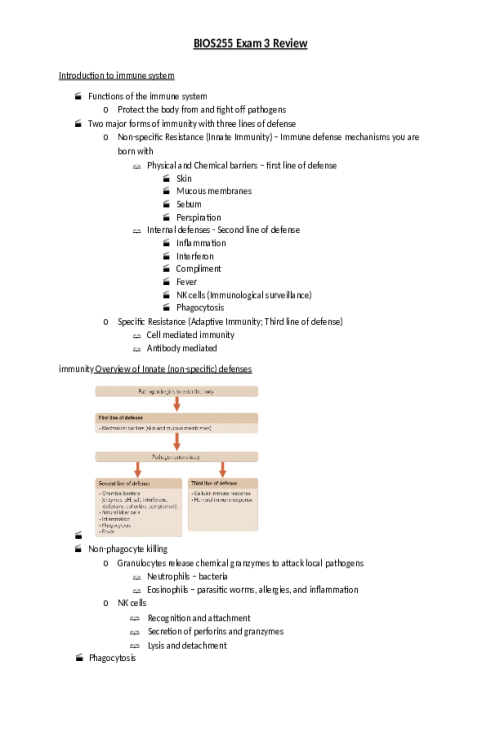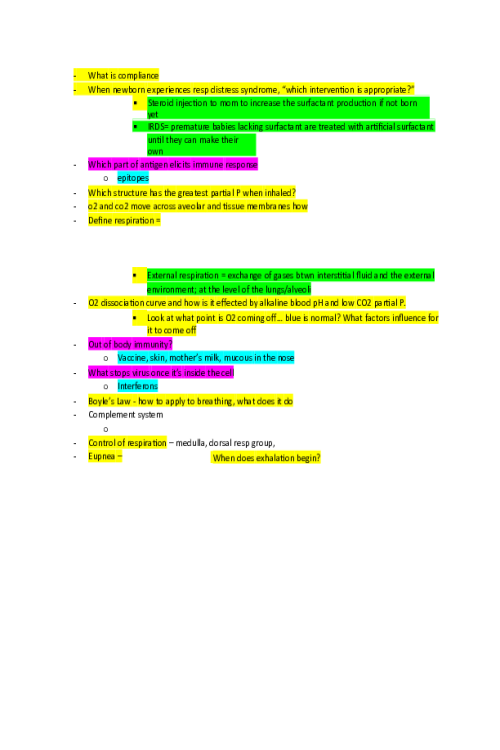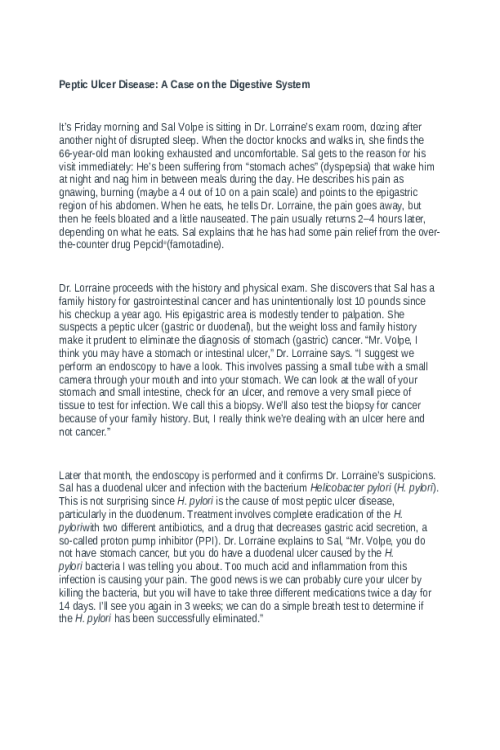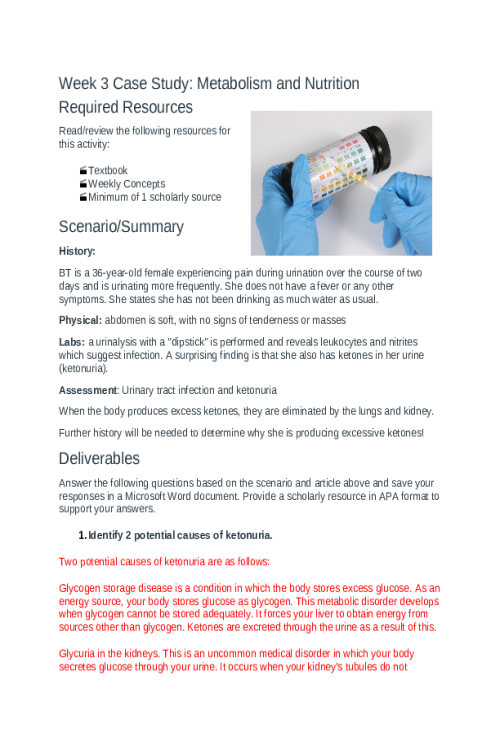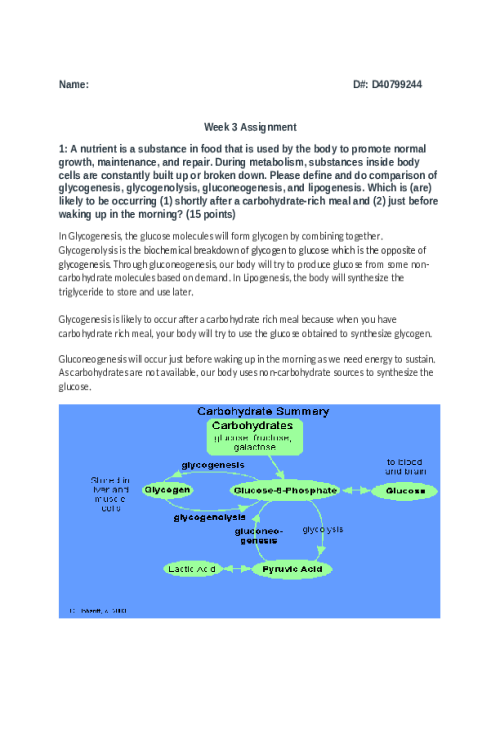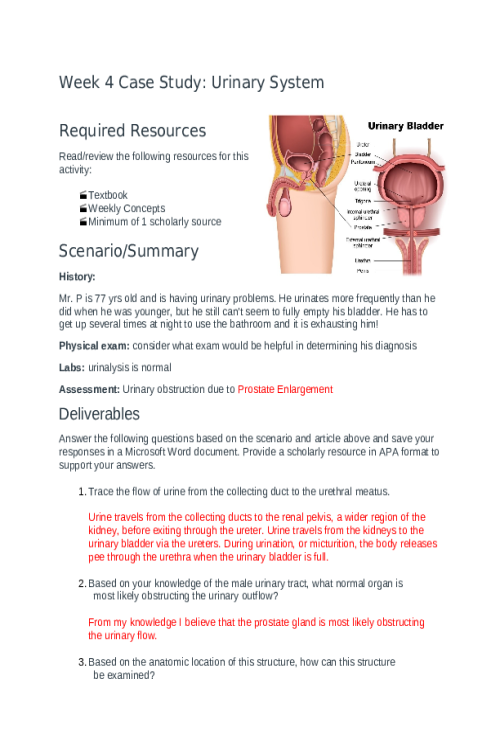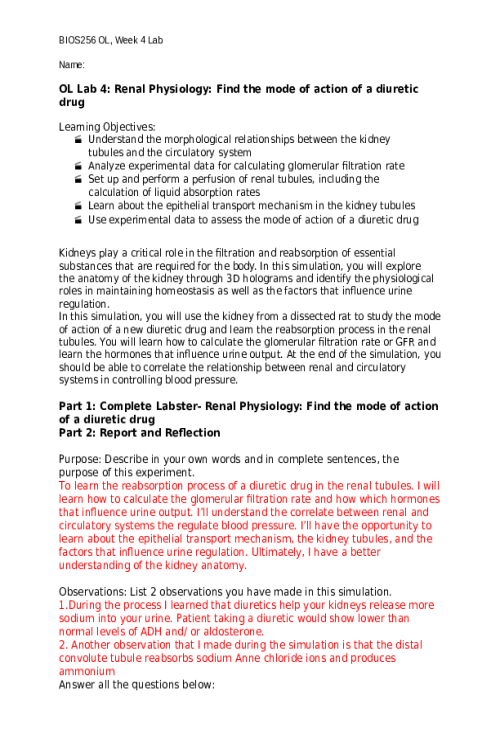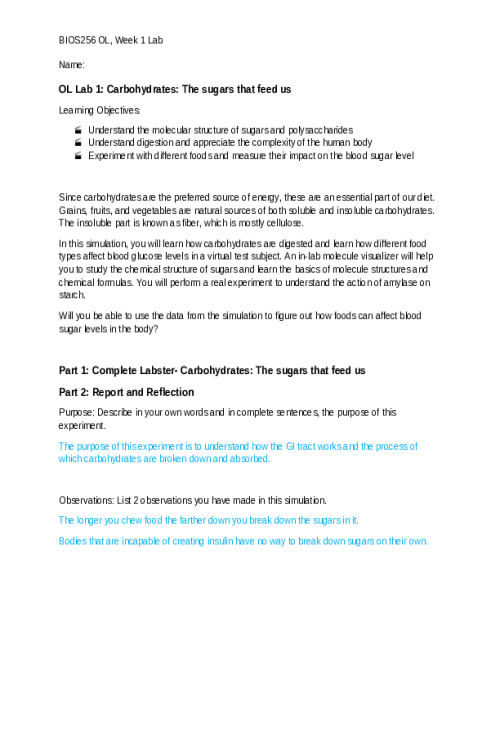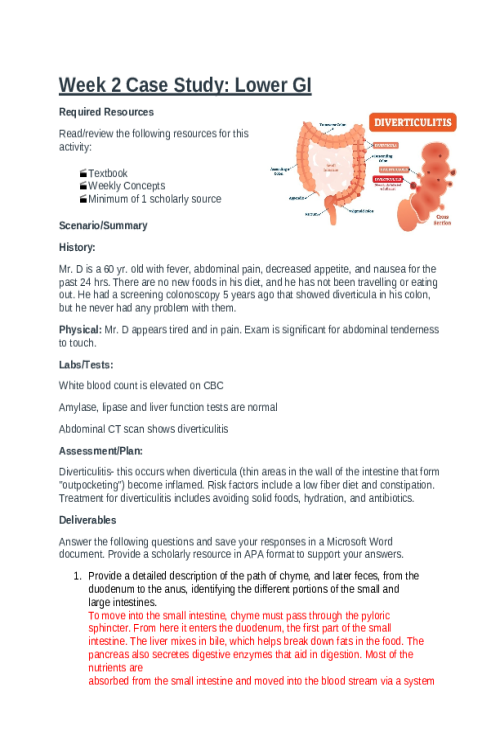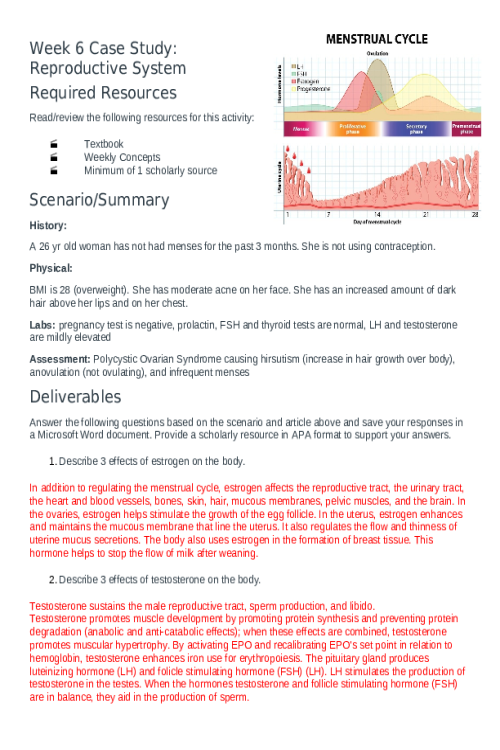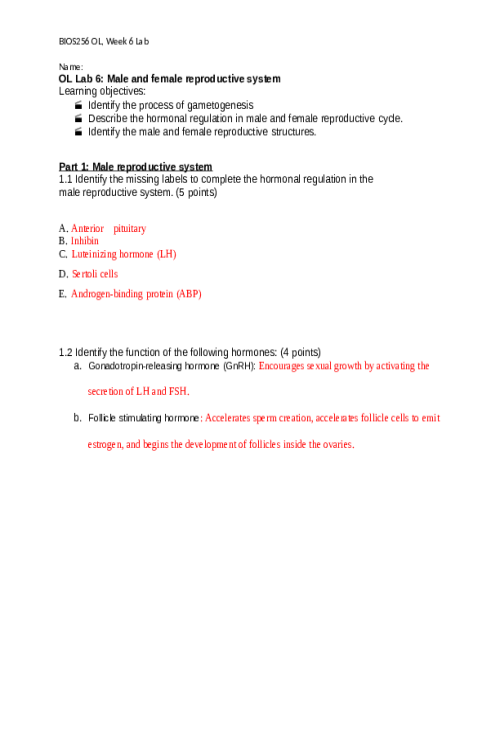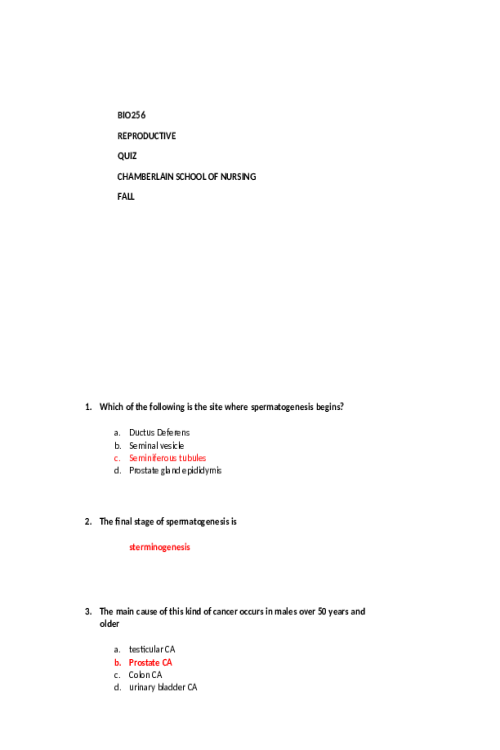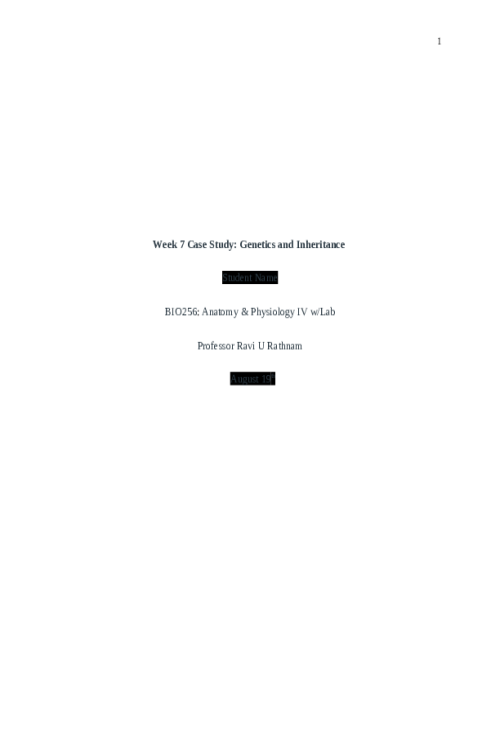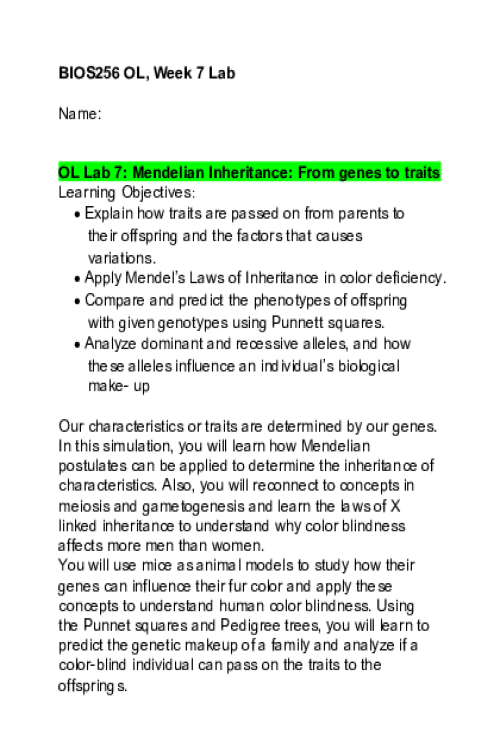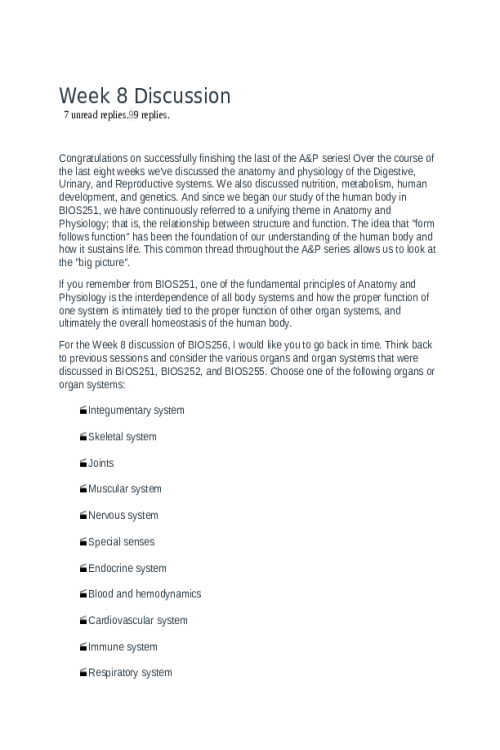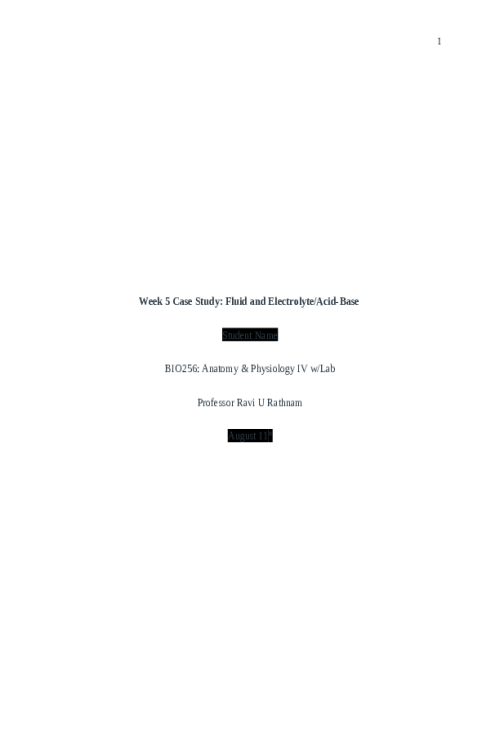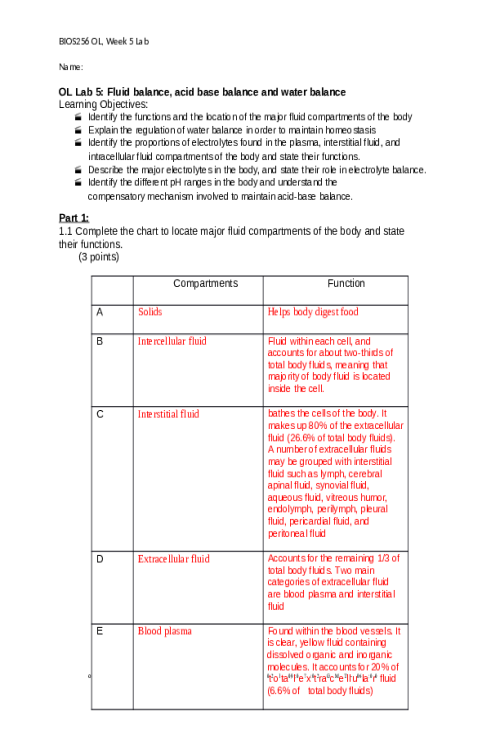BIOS 242 Week 4 Assignment; Concepts; Controlling Microbial Growth
Week 4 Concepts: Controlling Microbial Growth Controlling Microbial Growth Prepare: Controlling Microbial Growth The sterilizing gas used in chemiclaves is. ethylene oxide iodophor formaldehyde chlorine dioxide Glutaraldehyde HEPA filters are used to remove microbes from air. liquids. human tissues. medical instruments. All of the choices are correct. Which of the following microbial forms has the highest resistance to physical and chemical controls? Bacterial endospores Fungal spores Protozoan cysts Naked viruses Yeast Sterilization is achieved by flash pasteurization. hot water. boiling water. steam autoclave. All of the choices are correct. The method of removing vegetative microbial life forms and debris to reduce contamination to safe levels is termed . antisepsis pasteurization sanitization disinfection is a halogen used in gaseous and liquid form for large scale disinfection of drinking water and sewage. Bromine Betadine Fluorine Neon Chlorine The alcohol wipe used on a patient's skin before an injection is an example of. antisepsis disinfection sterilization decontamination sanitization Self-Check: Disinfection Techniques destruction of most microbial life, but often does not kill spore-forming bacteria Disinfection mechanical removal of most microbes from an animate or inanimate surface and can be accomplished with hot water, steam, or chemicals. Decontamination prevents bacteria from reproducing and does not kill bacteria Bacteriostatic destruction of all microbial life including endospores Sterilization disinfection on a living surface, such as patient’s arm Antisepsis kills bacteria Bacteriocide/Bacteriocidal the heating of food (ice-cream) and beverages (milk, juices) to remove harmful microbes. Pasteurization Drag the following terms to their corresponding description. Self-Check: Disinfection Techniques II is disinfection on a living surface. antisepsis sanitization degermation disinfection Sterilization The most resistant infectious particles are. fungi endospores viruses prions Helminths are the sturdiest and most encountered infectious agents. For this reason, these are used to test the efficacy of autoclaves. viruses helminths fungi prions Endospores removes all microbes from the environment. disinfection sterilization antisepsis sanitization degermation Self-Check: Factors Affecting the Efficacy of Antimicrobial Methods Drag to rank the following from most resistant (top) to least resistant (bottom). Prions Endospore-containing bacteria Nonenveloped viruses Enveloped viruses Self-Check: Methods of Chemical Control was the first major antimicrobial chemical used wi
Related Products
BIOS 242 Week 1 Assignment; Lab 1 of 14 Onsite - Culture Transfer Techniques
Contributor: Matthew Lillard
$10.00
BIOS 242 Week 1 Assignment; Lab 2 of 14 Onsite - Isolation of Pure Cultures
Contributor: Matthew Lillard
$10.00
BIOS 242 Week 2 Assignment; Lab 3 of 14 Onsite; Microscopy Observation of Cells
Contributor: Matthew Lillard
$10.00
BIOS 242 Week 2 Discussion; Characteristics of Prokaryotes and Eukaryotes Cells
Contributor: Matthew Lillard
$10.00
BIOS 242 Week 2 Assignment; Concepts; Classification and Nutrition
Contributor: Matthew Lillard
$10.00
BIOS 242 Week 3 Assignment; Lab 6 of 14 Onsite; Carbohydrate Fermentation
Contributor: Matthew Lillard
$10.00
BIOS 242 Week 3 Discussion; Culturing Microorganisms - Halobacterium noricense
Contributor: Matthew Lillard
$10.00
BIOS 242 Week 3 EXAM 1. Chapters 1, 3, 4, 5, 6, 9 - Multiple Choice Review Questions
Contributor: Matthew Lillard
$10.00
BIOS 242 Week 3 Assignment; Lab 5 of 14 Onsite; Differential Staining
Contributor: Matthew Lillard
$10.00
BIOS 242 Week 5 Assignment; Lab 10 of 14 Onsite; How Germs Spread..
Contributor: Matthew Lillard
$10.00
BIOS 242 Week 5 Assignment; Lab 9 of 14 Onsite; Food Safety.docx
Contributor: Matthew Lillard
$10.00
BIOS 242 Week 4 Assignment; Lab 7 of 14 Onsite; Disinfectants and Antibiotics
Contributor: Matthew Lillard
$10.00
BIOS 242 Week 4 Assignment; Lab 8 of 14 Onsite; Fomite Transmission
Contributor: Matthew Lillard
$10.00
BIOS 242 Week 6 Assignment; Pick Your Pathogen - Clostridium Perfringens
Contributor: Matthew Lillard
$10.00
BIOS 242 Week 6 Assignment; Concepts; Epidemiology of Infectious Diseases
Contributor: Matthew Lillard
$10.00
BIOS 242 Week 6 Assignment; Lab 11 0f 14 Onsite; Bacteria of the skin
Contributor: Matthew Lillard
$10.00
BIOS 242 Week 6 Assignment; Lab 12 0f 14 Onsite; Bacteria of Respiratory System
Contributor: Matthew Lillard
$10.00
BIOS 242 Week 7 Assignment; Lab 14 of 14 Onsite; Unknown Bacteria
Contributor: Matthew Lillard
$10.00
BIOS 242 Week 8 EXAM 3 Review. Chapters 14-23 (Excluding 16, 17)
Contributor: Matthew Lillard
$10.00
BIOS 242 Week 7 Assignment; Lab 13 of 14 Onsite; Bacteria of Digestive System
Contributor: Matthew Lillard
$10.00
BIOS 255 Week 1 Virtual Lab; Hematology Part I, Part II, Part III
Contributor: Chandler Hallow
$10.00
BIOS 255 Week 2 Virtual Lab; Cardiovascular Function during Exercise Part 1, Part II, Part III
Contributor: Chandler Hallow
$10.00
BIOS 255 Week 3 Concepts I The Cardiovascular System- Blood Vessels (Quiz)
Contributor: Matthew Lillard
$10.00
BIOS 255 Week 4 Assignment; Case Study I Natural Killer Cell Deficiency
Contributor: Matthew Lillard
$10.00
BIOS 255 Week 4 Concepts; The Lymphatic System (Edapt Lymph, Lymphatic Vessels Quiz)
Contributor: Matthew Lillard
$10.00
BIOS 255 Week 4 Concepts; The Lymphatic System (Edapt Lymphatic Cells, Tissues, Organs Quiz)
Contributor: Matthew Lillard
$10.00
BIOS 255 Week 5 Discussion; The Lymphatic System and Immunity; Option A
Contributor: Matthew Lillard
$10.00
BIOS 255 Week 5 Virtual Lab; Introduction to Immunology Part I, Part II
Contributor: Matthew Lillard
$10.00
BIOS 255 Week 5 Assignment; Case Study I Hypersensitivity Reactions
Contributor: Matthew Lillard
$10.00
BIOS 255 Week 5 Concepts; The Immune System (Edapt Immune System Quiz)
Contributor: Matthew Lillard
$10.00
BIOS 255 Week 5 Concepts; The Immune System (Edapt Innate Defenses Quiz)
Contributor: Matthew Lillard
$10.00
BIOS 256 Week 2 Discussion; Peptic Ulcer Disease; A Case on the Digestive System.
Contributor: Daniel Sturridge
$10.00
BIOS 256 Week 2 OL Lab 2; Intestinal Glucose Transport; Study a mouse intestine model todiagnose an infant
Contributor: Daniel Sturridge
$20.00
BIOS 256 Week 3 Discussion; Glycogenesis, glycogenolysis, gluconeogenesis, and lipogenesis
Contributor: Daniel Sturridge
$10.00
BIOS 256 Week 3 OL Lab 3; Cellular Respiration; Measuring energy consumption during exercise
Contributor: Daniel Sturridge
$20.00
BIOS 256 Week 4 OL Lab 4; Renal Physiology; Find the mode of action of a diuretic drug
Contributor: Daniel Sturridge
$20.00
BIOS 256 Week 1 OL Lab 1; Carbohydrates The sugars that feed us
Contributor: Daniel Sturridge
$20.00
BIOS 256 Week 2 Discussion; Peptic Ulcer Disease; A Case on the Digestive System..
Contributor: Daniel Sturridge
$10.00
BIOS 256 Week 6 Discussion; male and female reproductive systems
Contributor: Daniel Sturridge
$10.00
BIOS 256 Week 7 OL Lab 7; Mendelian Inheritance From genes to traits
Contributor: Daniel Sturridge
$20.00
BIOS 256 Week 5 Discussion; Fluid balance, electrolyte balance, and acid-base balance
Contributor: Daniel Sturridge
$10.00
BIOS 256 Week 5 OL Lab 5; Fluid balance, acid base balance and water balance
Contributor: Daniel Sturridge
$20.00
